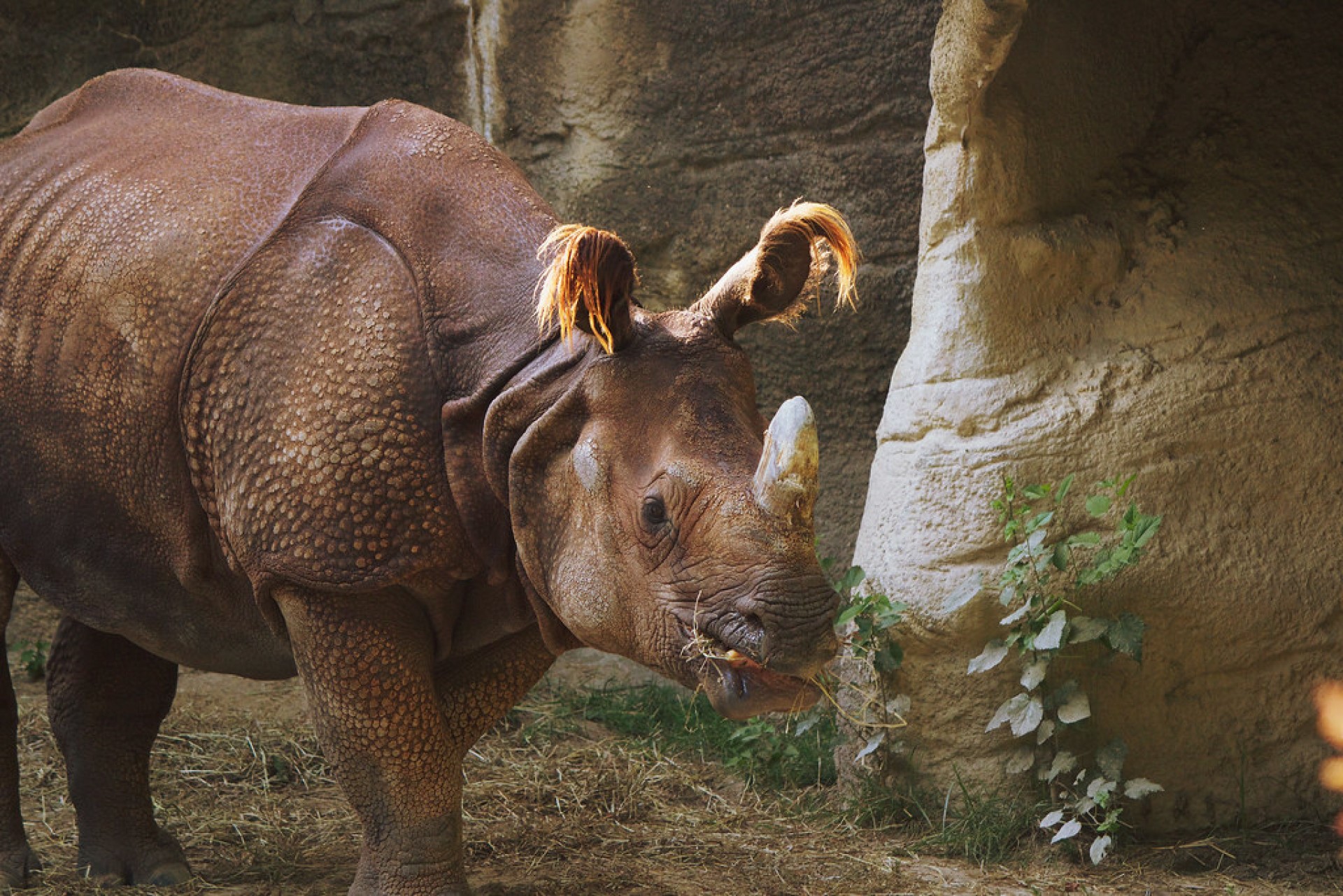
Sumatran Rhinoceros
 Sumatran rhino is also known as a hairy rhinoceros or Asian two-horned rhinoceros. Like the Javan rhino, the Sumatran rhino once had a range which covered a far larger area: rainforests, swamps and cloud forests in India, Bhutan, Bangladesh, Myanmar, Laos, Thailand, Malaysia, Indonesia and southwestern China, particularly in Sichuan.
Sumatran rhino is also known as a hairy rhinoceros or Asian two-horned rhinoceros. Like the Javan rhino, the Sumatran rhino once had a range which covered a far larger area: rainforests, swamps and cloud forests in India, Bhutan, Bangladesh, Myanmar, Laos, Thailand, Malaysia, Indonesia and southwestern China, particularly in Sichuan.
There are still 3 on the island of Borneo, as you can see, the map still lists a population on the Malay peninsula though it is thought that this group is extinct. The 3 subspecies are:
- The Sumatran island population: Western (34-47 individuals). This is unfortunately split in to 4 populations
- The Borneo island population: Eastern (may be as low as 3). This was only discovered in 2016 in East Kalimantan, after the population in Sabah, Malaysia (northern part of the island) was declared extinct in 2015
- The mainland population: Northern (this is thought to be extinct as of 2010, but it is possible that a small group remain).
Only four areas are known to contain Sumatran rhinoceros: Bukit Barisan Selatan National park, Gunung Leuser national park, and Way Kambas National park on Sumatra, and on Borneo west of Samarindah.
We hope to be able to list trekking for seeing animals like this in the future, do get in touch if you work in this field.
Note: to look at the rest of the rhino family click here











